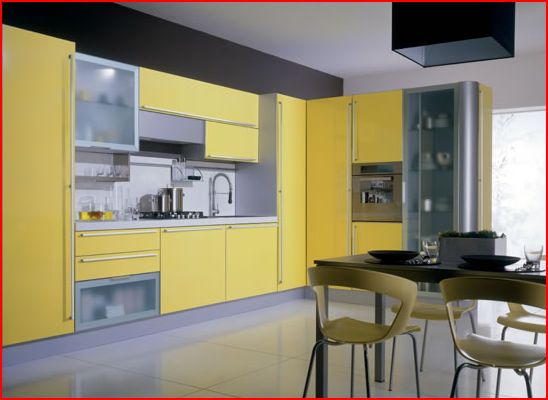Architectural features in a home range from large elements such as staircases and fire surrounds, to small details from ceiling roses to door mouldings. Features such as beams, ancient fireplaces and sloping ceilings can be both a blessing and a problem in older properties, while installing features can add interest to box-shaped modern rooms.
Fireplaces
A fireplace is one of the best architectural features a room can have. An obvious focal point, the fire itself provides warmth and inviting light, while the surround and chimney breast can both be used to display ornaments and pictures that draw the eye to this part of the room.
Revitalizing an old fireplace

Despite their appeal as a feature, fireplaces can seem drab and dreary if they are never used. Remedy this by changing the fire itself, if you never light the fire because you can’t face the mess of coal or wood; opt instead for a modern gas or electric fire. Likewise, replace out-dated electric fires with either a modern flue less fire or a multi fuel stove; you will find designs to fit every interior, from traditional to ultra-contemporary.
If you don’t like the style of the surround, there are plenty of companies who offer restored original or reproduction alternatives, made from wood, stone or iron. You could also replace the fireplace entirely, opting for a completely new grate, hearth and surround. While the standard advice is to choose a replacement fireplace that suits the age and style of the room, a top-of-the-range contemporary fireplace can look stunning in a period setting, providing the room’s furnishing and décor are also modern in style.
Replacing an old fireplace isn’t always a possibility, but the chimney breast and hearth can still become the focal point of the room, even if there is no working fire in place. Use the space as a display area, placing vases, decorative balls or even a string of fairy lights in the hearth, and hang mirrors or paintings on the chimney breast above.
Installing a new fireplace
This is one of the best ways to introduce character to a sitting room. The natural position for a living room fireplace is in the centre of the main wall. For the fireplace to become the heart of the room, ensure there’s enough space to group comfy chairs, a sofa and a coffee table around it.
There are thousands of reproduction designs available, plus a wide choice of contemporary ‘hole-in-the-wall’ designs if you’re looking for something a little more modern. Flue-less fire mean it’s possible to have a working fire on almost any internal wall.
Staircases
Every two-storey home will have a staircase, but although they are an essential part of our homes they are often overlooked when planning a scheme for a hall or landing. The space around them is also often under-used, yet is ideal for display and storage.
Replacing a staircase is a big job and there are many safety regulations to observe, from the size of the treads to the distance between each banister; so unless you’re desperate for a new staircase it’s advisable to make the most of what is currently in place. Staircases need handrails for safety, and some flooring are not suitable due to the risk of slipping.
Brighten up Your Staircase
Polish wooden handrails so they gleam. If the wood is of poor quality, or to give the staircase some rustic charm, paint or stain it a light color which coordinates with the surrounding landing and hallway.

Jazz up a bland, dull stairwell with dramatic lighting. Lighting it cleverly from above will not only make the staircase safer to use, but will also provide a welcoming glow when you enter the house. Open tread staircases can also be lit effectively and dramatically from below. The stairwell is perfect place to display pictures, so use it as a family gallery, to display photos or pictures that everyone can see as they climb the stairs.
If the staircase descends directly into a room rather than a hallway, prevent it from dominating the room by painting it an unobtrusive color. Help it become an integral part of the room by turning the space beneath into an open-plan living or storage area.
On the other hand, you might like to use the staircase as an architectural feature and emphasize its angular structure. Instead of fitted carpet or bare wood (which is very noisy), you could opt for a central runner. These come in a variety of styles, including colourful stripes and natural matting. Paint the edges of the treads and risers, either to match the surrounding woodwork or in a contrasting color.
Architectural Mouldings
Architectural mouldings have a part to play in the overall appeal of a room, especially in an older property. Cornices and covings at the top of the walls and skirtings’ at the bottom hide the joint between the walls, ceilings and floor and so provide a seamless visual flow between the room’s surfaces.
Coving, Architecture and other Architectural Trims
Older homes can have an unfinished look if the mouldings have been removed from walls and doors, so part of the restoration work may include replacing any missing mouldings. It is worthwhile researching appropriate styles.
In modern homes it is best to be cautious, as filling a room with added architectural details can add a sense of unnecessary fussiness. However, coving can be used to add interest to a plain, box-like room, while narrow skirting boards can be made deeper by fixing a length of profiled mouldings above the existing board, and then repainting the entire skirting the same color.
The same principle applies to simple door and window architraves, which can be made bigger using extra lengths of decorative moulding fitted around the existing architraves. This has the advantage of drawing attention to the window or door, while adding visual interest to a featureless room.
In today’s homes, dado and picture rails usually have only decorative appeal, but they can be useful to break up large expanses of wall in long rooms.
Beams
In barns or older homes with beams, let the beams stand out. For a pared-down look, keep walls a pale neutral shade and, if the walls as well as ceiling are beamed, keep pictures on the wall to a minimum. Beams that have been painted black can be professionally sandblasted to return them to their natural shade.
Panelling
If the idea of wooden panelling makes you think of ancient homes from history books, then think again. Simple wooden tongue-and-groove cladding, made from inexpensive softwood such as pine, is usually available from DIY stores or is relatively easy for a carpenter to make. It can be used either to dado height, picture rail height or from floor to ceiling to great effect in kitchens, hallways and bathrooms. It is ideal for covering less than perfect walls; helps hide pipes and insulation, and can be painted any shade you fancy.



